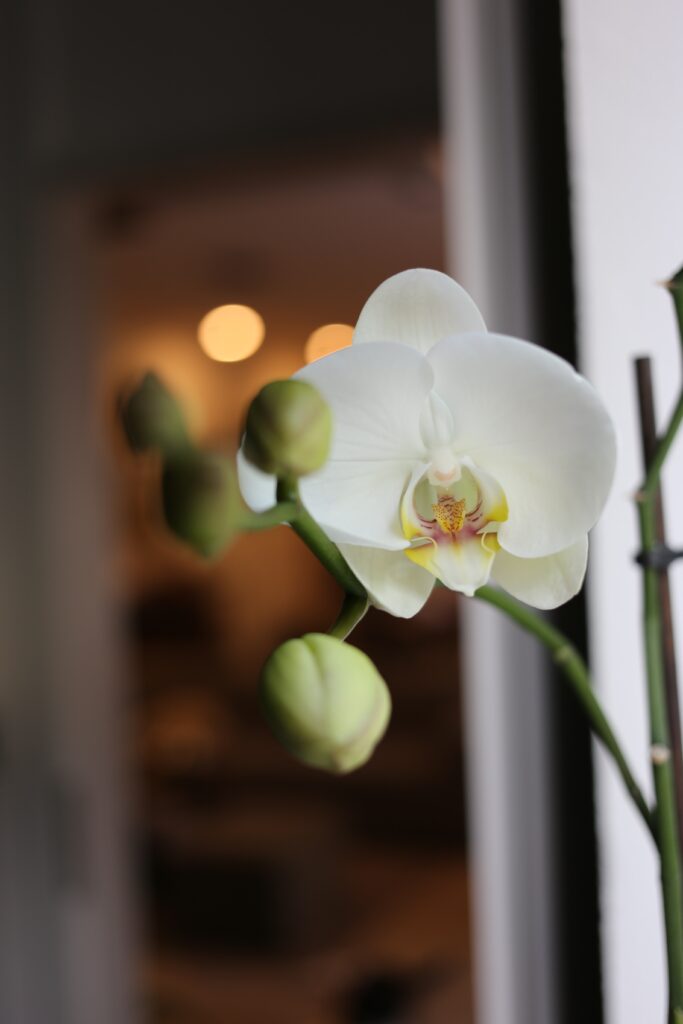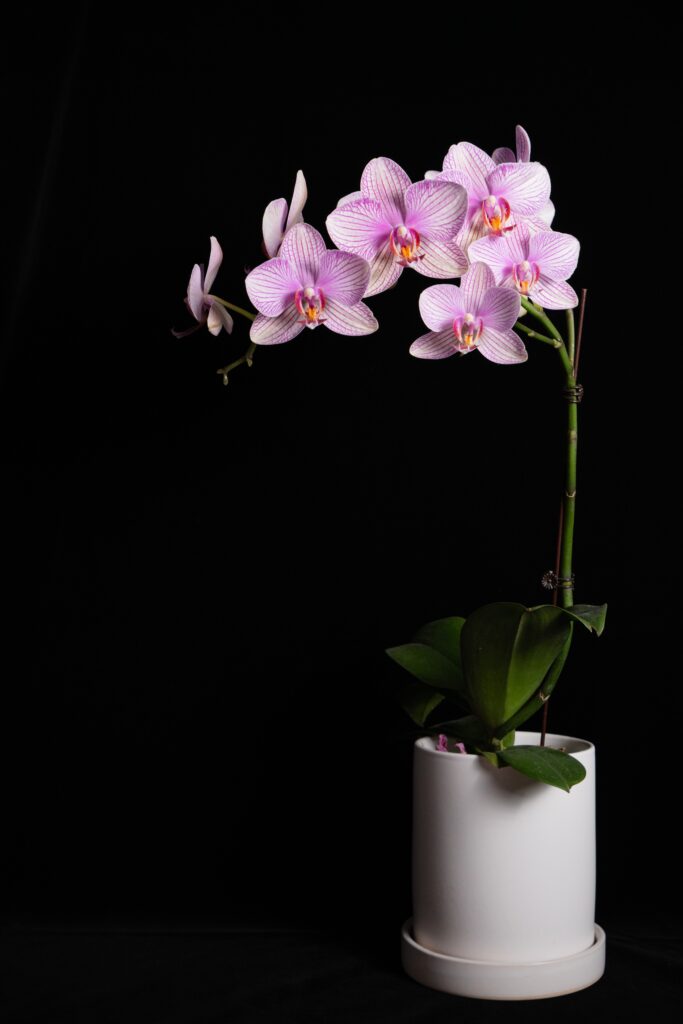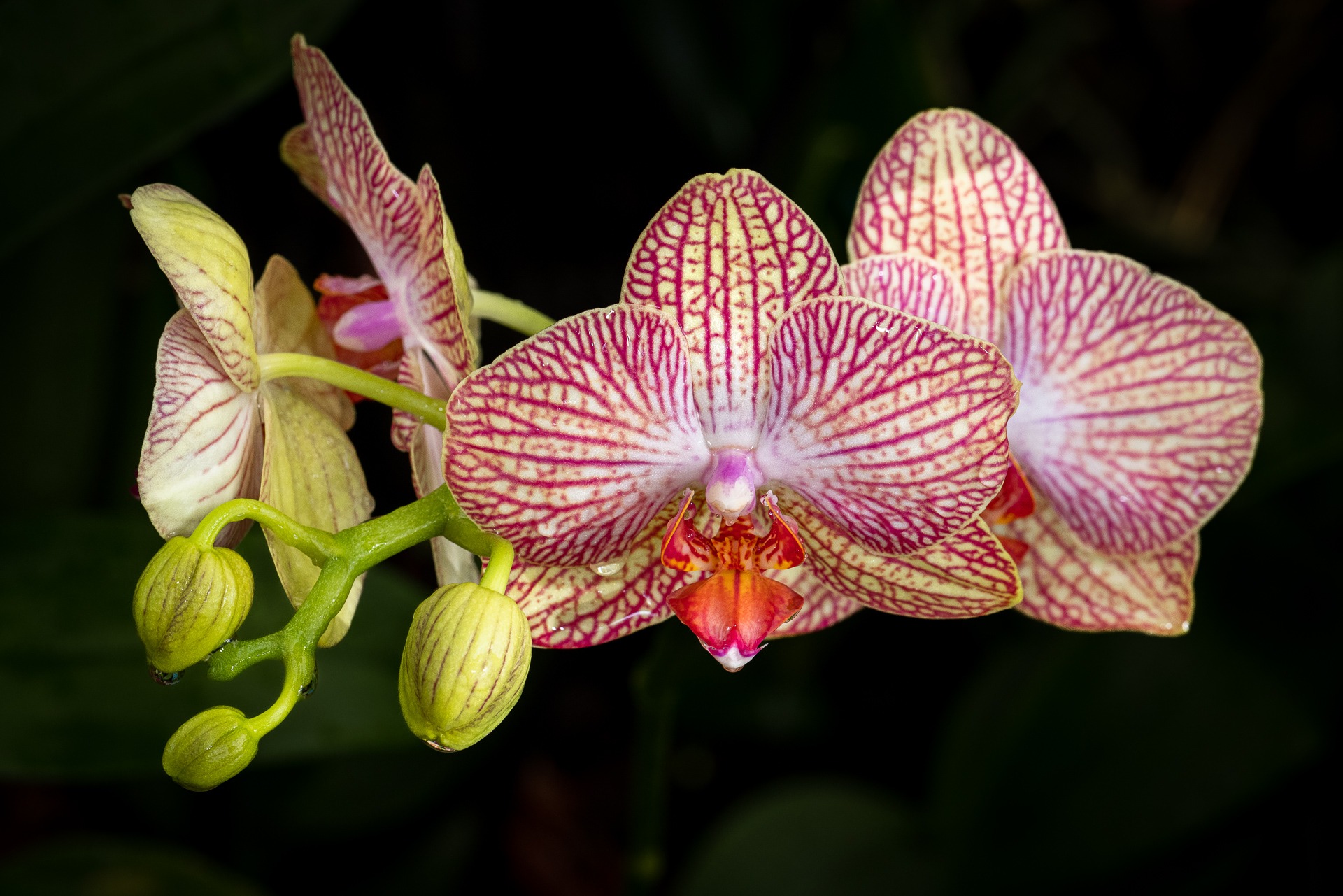
The Rainforest Conservatory is currently filled with orchids from every corner of the globe. You might think you could never craft a tropical paradise in your own home, but orchids are more accessible than you might think. With a few simple tips, you can create your own World of Orchids.
Orchids are widely available today, found not only at specialty garden shops but also at grocery stores. Many people buy these plants but treat them as they would cut flowers: They enjoy them while they bloom but then toss them when they die back.
“This is a shame, because orchids will bloom year after year if given a little care and attention,” says Dotty Woodson, former Texas A&M Extension Water Resources Specialist and consultant on the World of Orchids. “Please don’t throw away your orchids!”
The variety of orchids most commonly sold in stores is Phalaenopsis. These plants feature multiple, long-blooming flowers on graceful arching spikes. Phalaenopsis orchids are available in many colors, and some are spotted and striped. Many are fragrant.
In nature, Phalaenopsis plants grow as epiphytes; that is, they do not grow in soil but rather cling to trees. They are found across Southeast Asia, particularly in Malaysia, Indonesia, the Philippines, India and China. In Fort Worth, they naturally flower in late winter and early spring, although greenhouse-grown plants can be found in bloom year-round.
When you bring your orchid home, Woodson suggests placing the plant where you will enjoy the flowers the most. Orchids prefer bright but indirect light, so anywhere bright enough for you is likely bright enough for the plants. Avoid direct sunlight, which can burn the leaves.
Water your orchid once a week. Phalaenopsis do not like to sit in water–remember they grow on trees, where extra water would run off. Check the pot in which the orchid is growing for drainage holes. If the pot does not have holes, pour out any extra water.
Many people give up on orchids when they stop blooming. But these plants are perennials and will bloom year after year. Once all of the flowers drop off the stem, cut the flower stem off near its base. Place the orchid near a south or east window. In the summer, you can move your orchid outside to the shade.
Keep watering once a week. From April to October–the growing season–fertilize every two weeks with water soluble fertilizer.

“It will be fine,” says Woodson. “Orchids thrive on neglect. and in time you will be rewarded with new blooms to enjoy!”
Even if you have nowhere to keep your orchid, don’t throw it away! Donate it to the Garden. The Garden maintains a conservation greenhouse with an orchid collection. (Many of the plants in this collection are currently on display in the Rainforest Conservatory.) Call the Garden at 817-392-5510 to ask for information on how to donate.
Woodson has one warning: orchids are addicting. Many people who start with one orchid can’t resist adding more. To find support for this new habit (in the sense that they will encourage you to keep building your collection), consider joining the Fort Worth Orchid Society. Learn more about the organization and get information on meetings and membership at their Facebook page.
Another resource recommended by Woodson is the American Orchid Society, especially its online culture sheets. These documents offer details to help orchid lovers successfully grow several varieties of the flower, including Phalaenopsis.
Plan your visit to The World of Orchids, running now through April 9, and get hooked on orchids today.







